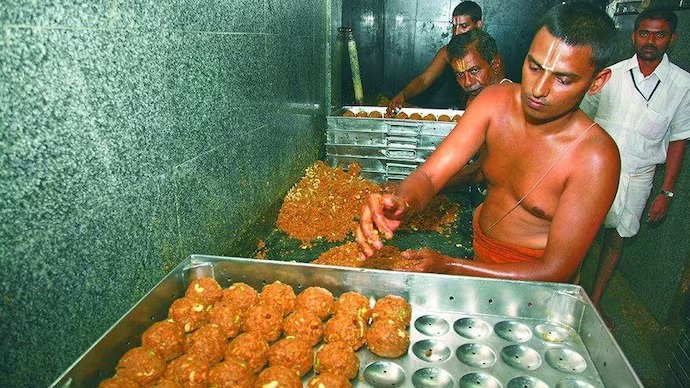The recent controversy surrounding the use of beef tallow and fish oil in the sacred Tirupati Laddoo has shed light on ancient practices regarding the proper handling of ingredients to prevent adulteration in the holy prasadam. According to information, inscriptions on the walls of the Lord Venkateswara temple detail measures for managing essential ingredients like ghee.
Temples in Tirumala and Tirupati are home to 1,150 inscriptions, with 700 of them located in the Tirumala temple alone. These inscriptions, dating from the 8th to the 18th centuries, are written in languages including Sanskrit, Tamil, Telugu, and Kannada. Notably, one inscription from 1019 CE outlines the systematic packaging of ghee, ensuring its proper transport to Tirumala.
The translated version of an inscription on the northern wall of the temple’s ‘Ananda Nilayam’ mentions that a royal officer was appointed to oversee the conduct of services and donations, prompted by public inquiries. This officer was responsible for ensuring that 23 pon (a unit of gold) was allocated for the ‘paricharakam’ service, which included the careful packing and transportation of ghee for daily offerings.

This inscription marks the first documented instance of a committee being formed to investigate lapses in worship and food offerings at the Lord Venkateswara temple. Furthermore, the report highlights a well-defined procedure known as ‘Dittam,’ established during the Pallava era, which mandates that an officer checks food items for quality and quantity before they are offered as ‘Naivedyam’ (sacred offering) in the sanctum sanctorum.
As discussions continue around the integrity of the ingredients used in prasadam, these ancient guidelines underscore the importance of maintaining traditional standards in temple offerings.





